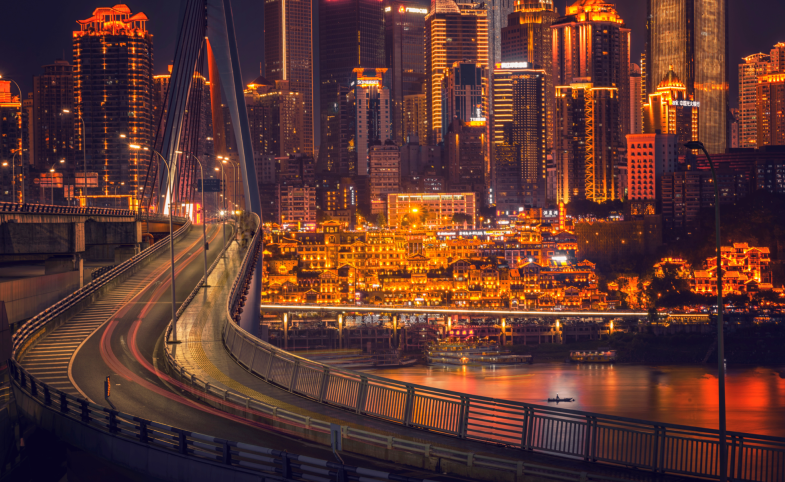With a population of 216 million and a distinct culture of fan fervor, Brazil is a unique region for cultural exchange and diplomacy. American sports teams and entertainers have shown a new dedication to the Brazilian...
KEEP READINGThe CPD Blog is intended to stimulate dialog among scholars and practitioners from around the world in the public diplomacy sphere. The opinions represented here are the authors' own and do not necessarily reflect CPD's views. For blogger guidelines, click here.

City Branding Through Tourist Eyes: How YouTube Shapes Chongqing’s Global Image
In today’s era of digital diplomacy, where soft power is increasingly mediated through online platforms, cities are rethinking how they present themselves to the world. Rather than relying solely on state-led campaigns or large-scale international events, many urban centers now leverage social media narratives, especially those generated by users. Chongqing, a sprawling city in southwestern China, provides an example of how tourist-driven content on YouTube plays a pivotal role in constructing global perceptions.
Unlike Beijing or Shanghai, Chongqing has not hosted major global spectacles to elevate its international status. Instead, it has quietly risen to prominence through digital storytelling, particularly via platforms like YouTube, where tourists and content creators become unexpected ambassadors. This blog explores how user-generated content (UGC) contributes to Chongqing’s city branding and what it reveals about public diplomacy in the age of digital media.
The Rise of Tourist-Generated Content in Public Diplomacy
China’s post-COVID push to attract international visitors includes visa-free access for travelers from 38 countries. This initiative not only supports tourism recovery but also aims to spotlight cities beyond the usual suspects. Chongqing, ranked fourth among Chinese cities in YouTube influence, exemplifies this strategy.
While official promotional channels such as iChongqing tout the city’s “Mountain City” identity and “Smart City” credentials, these efforts often fall short. Studies have found that official content tends to lack emotional resonance and relatability, resulting in lower audience engagement compared to UGC.
Tourists, on the other hand, offer something official campaigns struggle to achieve: authenticity. Their vlogs—often more compelling and widely viewed—center on personal experiences, such as navigating Chongqing’s dramatic monorail system or savoring its famed spicy hotpot. As Nicholas Cull notes, opinion is shaped by the direct experiences of individuals, whether encountered in cyberspace or the real world. On YouTube, the long-form, first-person format empowers tourists to create immersive, emotionally engaging narratives that resonate globally.
What Tourist Vlogs Reveal About Chongqing
To explore Chongqing’s YouTube-driven image, I analyzed 21 high-engagement tourist vlogs (6,000–2.6 million views) posted from July 2024 to January 2025. Four dominant themes emerged:
- #CyberpunkChongqing – Urban Aesthetics
Tourist videos frequently portray Chongqing as a “cyberpunk” city, emphasizing its layered topography, futuristic architecture (e.g., Raffles City), and striking visuals like monorails passing through buildings. These features, combined with neon lighting and dense urban landscapes, create a visually immersive, sci-fi atmosphere—ideal for social media sharing. - #SmartCityChongqing – Tech and Infrastructure
Vloggers highlight Chongqing’s technological integration, including cashless transactions, efficient public transit, and smart infrastructure. The city's rapid development and digital innovation reinforce its image as a forward-looking, tech-savvy metropolis. - #OldMeetsNewChongqing, #SpicyFlavors, #FriendlyChongqing – Cultural Fusion
Cultural narratives focus on the coexistence of tradition and modernity, seen in contrasts between historical districts (e.g., Danzishi Old Town) and contemporary urban life. Vloggers also celebrate Chongqing’s bold cuisine, especially its spicy street food and hotpot, while recounting warm, friendly encounters with locals, reinforcing a hospitable, vibrant cultural identity. - Affordable and Dynamic Lifestyle
Chongqing is portrayed as both lively and affordable. Nightlife scenes—featuring boat tours, karaoke, and square dancing—reflect a safe, energetic urban life. Cost-effective living, particularly affordable food, appeals to budget-conscious travelers.
Collectively, these tourist-generated narratives construct a multifaceted image of Chongqing as a futuristic, culturally rich, and accessible city, blending spectacle with authenticity in the digital public sphere.
"For Chongqing, the role of tourist content goes beyond entertainment; it functions as a form of cultural exchange that fosters understanding and engagement across borders. "
UGC as Public Diplomacy: Tourists Shaping Chongqing’s Global Identity
The emergence of UGC as a force in city branding reflects a shift in public diplomacy—from top-down messaging to decentralized, participatory storytelling. For Chongqing, the role of tourist content goes beyond entertainment; it functions as a form of cultural exchange that fosters understanding and engagement across borders.
1. Comment Sections as Cultural Bridges
Analyzing over 8,000 YouTube comments revealed three recurring dynamics:
- Nostalgia as Advocacy: Past visitors often share memories, reinforcing Chongqing’s appeal through personal testimony. These emotional connections encourage repeat visits and word-of-mouth promotion.
- Crowdsourced Travel Guidance: Viewers swap tips, while locals step in to offer context, transforming comment sections into organic, collaborative guidebooks.
- Global Dialogue: Users from India, the U.S., and South Africa debate urban design, compare transit systems, and share cultural insights, positioning Chongqing as a reference point in global conversations.
These micro-interactions illustrate how everyday users participate in cultural diplomacy, often more effectively than traditional campaigns.
2. The Double-Edged Sword of “Instagram Diplomacy”
While social media boosts Chongqing’s visibility, it also introduces challenges:
- Overtourism: Destinations like Hongyadong now face overwhelming tourist traffic, straining infrastructure and local patience.
- Expectation vs. Reality: Some vloggers express disillusionment when real-life experiences don’t match the stylized imagery seen online.
- Cultural Barriers: Despite its tech-forward image, Chongqing still lacks widespread English service in public spaces, like restaurants, leading to confusion for non-Chinese speakers.
The lesson: digital branding must be backed by practical, inclusive policies to maintain credibility and positive reception.
3. Tourists as Inadvertent Diplomats
When a South African traveler films local residents helping her navigate a menu, or an Indian vlogger praises the city’s affordability, they become de facto diplomats. Their unscripted stories hold persuasive power, lending authenticity that official narratives often lack.
To harness this potential, cities can:
- Collaborate with Influencers: Partnering with creators like Vishal Tandon (2.6M views) can amplify strategic messaging with grassroots credibility.
- Track UGC for Feedback: Monitoring online content and comments reveals real-time insights into visitor satisfaction and emerging trends.
- Launch Participatory Campaigns: Initiatives like “30,000,000 +1 Chongqing Stories” can invite global audiences to share their personal stories about Chongqing and co-create the city’s image, deepening engagement and inclusivity.
Chongqing’s global image—shaped through the lenses of tourists and amplified by platforms like YouTube—illustrates the evolving nature of digital public diplomacy. Tourists capture not only what the city looks like but what it feels like, offering a narrative that is at once visually spectacular and emotionally grounded.
As cities compete for attention in an oversaturated media landscape, Chongqing shows that authenticity, diversity, and participatory storytelling can be powerful tools for global branding. The challenge now lies in aligning the virtual image with on-the-ground experience—ensuring that what captivates online also delivers in person.
In the age of digital diplomacy, it’s not only what cities say about themselves that matters—but what visitors say for them.
Visit CPD's Online Library
Explore CPD's vast online database featuring the latest books, articles, speeches and information on international organizations dedicated to public diplomacy.
POPULAR ARTICLES
-
November 3
-
November 5
-
November 13
-
November 25
-
December 17
Join the Conversation
Interested in contributing to the CPD Blog? We welcome your posts. Read our guidelines and find out how you can submit blogs and photo essays >.













